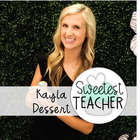Welcome to my hosted chapter of the Reading Strategies Book by Jennifer Serravallo. Before I jump into my post about this chapter, let me just say that I love everything written by Jennifer Serravallo, and own EVERY book she has ever written. So, it goes without saying that as soon as I heard about this book, it went on my wish list to buy as soon as it was published! Let me tell you, that this book does NOT disappoint! It is AMAZING!
I was not the only one to fall in love with this book, so I joined together with fellow fans as part of what we call #TheReadingStragegiesCrew (because everyone needs a fabulous hash tag, right?). We have each chosen a section to write about, and my section is goal 6.
This book is essentially made up of many, many strategies, so we have decided to choose 2 or 3 strategies to highlight in our posts. Let me say, that there are many, many more strategies in each section, and they cover pre-emergent readers until the end of 8th grade levels. I find this so helpful, because my class is never composed of 100% of students reading at grade level. Instead, I have a mix of below level, at level, and above level readers. These strategies allow me to differentiate for my learners to meet them where they are.
If you struggle with ideas for reading mini-lessons, this is the book for you!
Below is a list of all the strategies included in this section alone!
For each strategy, Jennifer includes an explanation, lesson language, prompts, as well as anchor charts or other teaching tips to help you implement each one. In my post I will be focusing on strategies 6.2 What's in the Bubble?, 6.11 Character Comparisons, and 6.16 The Influences on Character.
What's in the Bubble?
According to the book, this strategy is suitable for levels C-M. In this strategy, we are teachings readers to pause and think, "What's my character thinking here?" or "What might my character be saying here?"
In the book, there is a picture of these think and dialogue bubbles. I think they would be the perfect hands on item to have a student use to remind them of this strategy!
A few prompts from the book include:
"What just happened? So, what might your character be thinking?"
"What words is your character saying in his or her head?"
"Before you turn the page, pause and think about what he or she would be thinking."
Character Comparisons
This strategy is best used with levels J and above. This strategy involves a student thinking about two characters, and then comparing them using ideas such as traits, how they handle challenges, likes and dislikes, interests, change, an lessons learned.
When I conference with students, I like to have items to bring with me to demonstrate what I am looking for or as a teaching reference. One way to make this toolkit easy to carry around is by using index cards on a ring. The example picture below uses sentence stems for non-fiction comparisons, but they could easily be used for this strategy as well.
The Influences On Character
This third strategy is for your readers at level N and above. In this strategy, readers consider all the influences on the character - the problem(s) the character is facing, the other characters with whom he or she comes in contact and the setting of the story. The reader is asked to think about what effects these influences have on the character and how they act in the story.
Another tool kit that you might want to carry is mini-anchor charts on an artist sketch pad.
If you would like to read other posts from our #ReadingStrategiesCrew you can find them below:
Goal Two with My First Grade Happy Place
Goal Three with My Literacy Spot
Goal Four with EduKateDawson
Goal 5 with Love to Teach a Latte
Stay tuned for Goal 7 coming from Owl Things First August 24th.
To stay up to date with the rest of our posts, refer to the schedule below:
















































